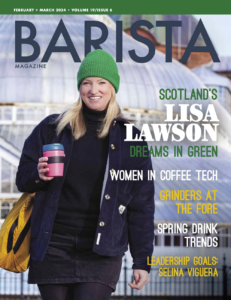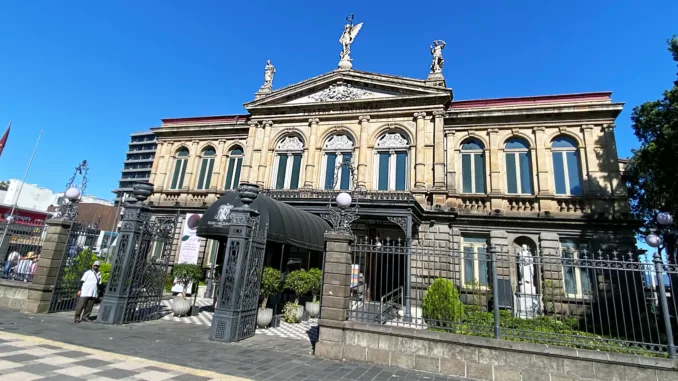
BY J. MARIE CARLAN
BARISTA MAGAZINE ONLINE
Photos by J. Marie Carlan
We’re back from Dalla Corte’s DC Campus in Costa Rica, organized by our friends at Viaje con Café. The week was spent immersed in Costa Rica’s coffee culture: learning about the country’s deep ties to the crop, visiting cafés and farms, and enjoying the beautiful landscapes and tropical climate.
In part one of this article, we visited a farm pushing the envelope with techniques and products, and discussed some of the research that CATIE and World Coffee Research are doing in Costa Rica. Today, we’ll take a look at what it’s like for farmers and coffee pickers on the ground.
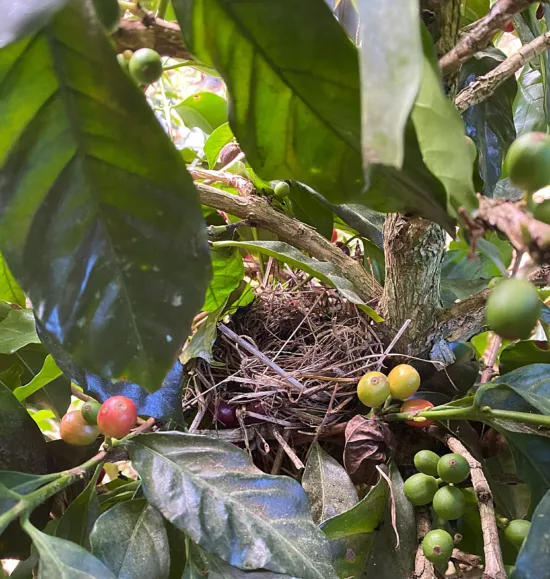
A Day on the Farm
At Finca La Margarita, in the Alajuela province, farm manager Emmanuel Soliz hands out rounded plastic baskets with straps to tie around our waists. These baskets use a unit of measurement called a cajuela. In Costa Rica, coffee is measured by volume for pickers, before it’s measured by weight later in the sale process. One cajuela holds about 17 liters of coffee cherries.
Our goal is to see how much coffee we can pick in a certain amount of time, working on a plot of the Esperanza variety. We’re tasked with only picking the ripe red cherries. This is a task easier said than done; some of the green beans try to jump in the basket with the red ones, and some cherries are too ripe. Any small buds on the branches must be avoided so as not to injure them; those buds are future coffee cherries.
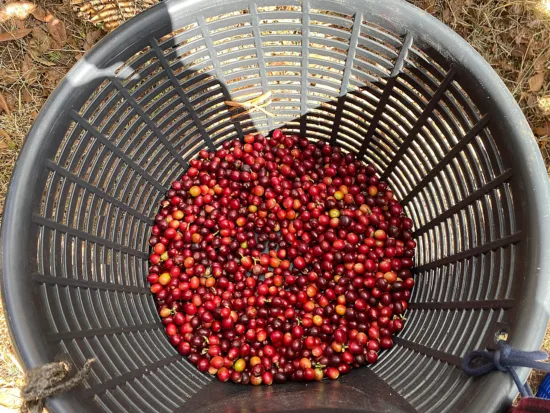
How (Not) to Pick Coffee Cherries
After about half an hour, I’ve picked a few hundred cherries. They barely fill the bottom of my cajuela basket. I also realize I’ve let slip too many greenish cherries, and feel uncharacteristically ashamed. We’re told that an experienced picker can fill about 20 baskets a day. The speed at which they work is impressive. On a typical finca, a picker will earn $2 per basket filled. For some specialty farms, like this one, the price may go up to $3 or $4 a basket, since it requires more time and greater care to pick only the ripest ruby cherries for harvest.
Two pickers are on hand at the farm, with full baskets. They wait patiently as the La Margarita team individually weighs all of our paltry harvests. When the pickers’ baskets are finally measured, we break into applause.
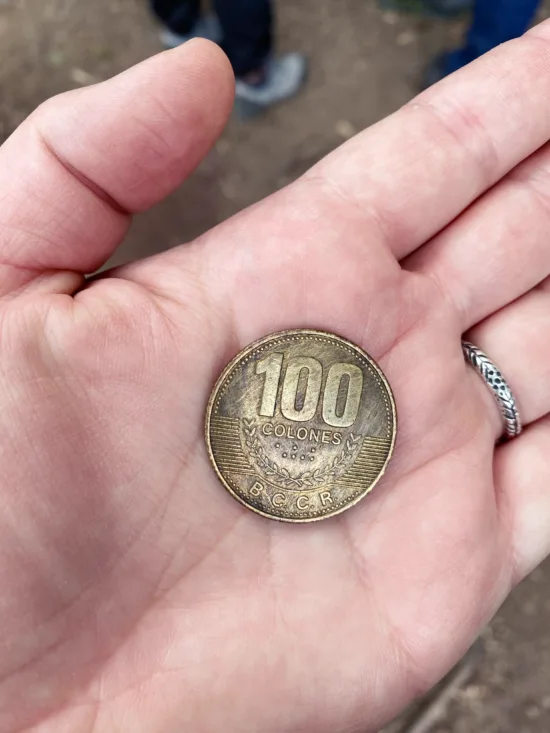
In total, the DC Campus group has picked five cajuelas. We are each awarded in colones (Costa Rica’s currency) for the amount of cherries we picked. Prizes are awarded to top pickers for volume and cherry quality. I’m in the smallest earning group, at 100 colones, which is equivalent to 19 cents USD.
Most of the pickers are not Costa Rican locals. Typically, indigenous peoples migrate for the season from Nicaragua and Panama to gather the coffee harvest. During the height of the COVID-19 pandemic, there were issues with transportation, stressing the harvest supply chain. Now, different stressors are affecting coffee harvests.
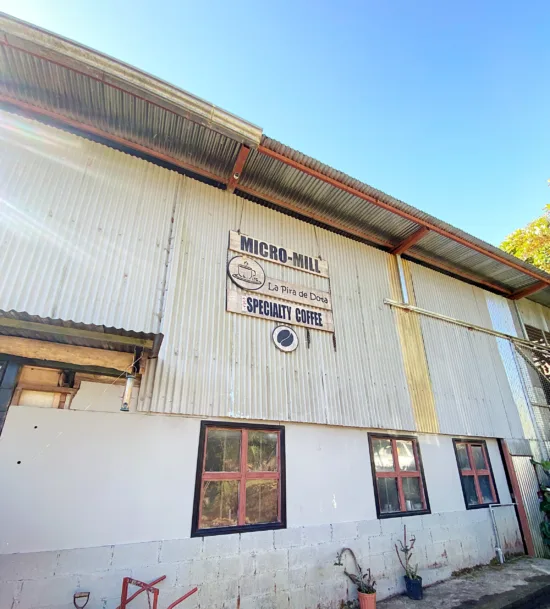
Finca La Pila de Dota: A Unique System
La Pila is a family-run micromill in Dota with an old-timey feel. The inside of the mill is checkered with vintage coffee cups, painted wooden cart wheels, coffee bags, and paraphernalia. Antique farm equipment dots the land outside, where a few cows roam freely, and coffee trees blend into other fruit-bearing trees and bushes tucked away into the hillside.
La Pila produces coffees without pesticides and herbicides. The eldest member of the family, Carlos Ureña Ceciliano, has engineered clever methods of making his own fertilizer. He mixes semolina, sugarcane, and water with topsoil. He then adds different elements, such as potassium, to different mixes for various uses around the farm. When it’s ready, he adds a gallon of the homemade fertilizer to a pump spray can, fills it the rest of the way with water, and sprays the plants every two weeks.
Carlos has also developed a system utilizing night winds (the 1,700-meter elevation makes the nights chilly) to cool down water without electricity, which is then used to soak coffee cherries overnight just after harvesting. The beans come out sweeter and better-tasting after this treatment. Carlos’ daughter, Ana Victoria Ureña Gamboa, gives a demonstration on how the cold affects the sugars in the cherries. First, she peels open a warm mango with her teeth, showing how the juice sprays and runs from the fruit at regular temperature. Then, she opens a cooler to reveal a cold mango. When she peels it, the juices don’t spray out, but remain in the fruit.
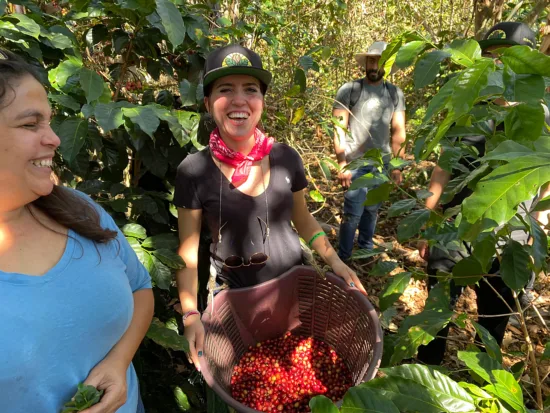
In the Trees
Ana leads us around the coffee trees and shows us cherries of different varieties, like Typica and Gesha, allowing us to taste them. The cherries all have different flavors, which makes it easier to imagine how the final products will differ. At our feet, the ground is covered in fallen twigs and leaves, which Carlos allows to settle for soil nutrition. Tiny coffee plants grow around the base of their parent coffee trees; Carlos will remove some of these to grow in other spots, and leave some to help benefit the parent plants.
This late into the harvest, La Pila gathers both ripe and unripe cherries to process for local consumption. Specialty-grade coffee is sent overseas, where it will fetch a better price. Most of Finca La Pila’s coffee is exported to Japan.
Some of the trees have obvious damage with light spots on the leaves; Ana informs us that these spots are called ojo gallo (rooster eyes) and are from an overabundance of rain. Like other farms in Costa Rica, a good portion of La Pila’s coffee crop was lost to heavy rains in an early harvest season. However, the weather remains dry enough for now, and the plants continue to sprout new leaves.
Still, Ana knows that next year’s harvest will also be impacted by the rains this year. This is the reality producers are facing in the changing climate.
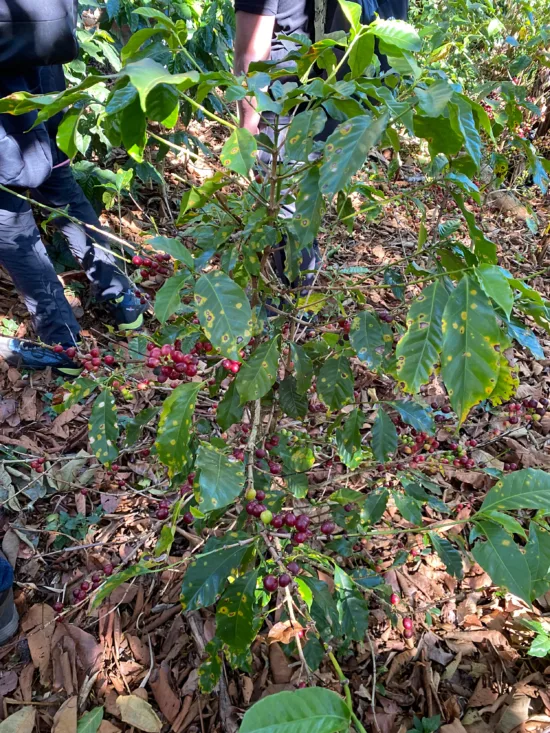
Final Thoughts
After seeing how difficult it is to grow, pick, process, and export coffee from producing countries, I can’t look at my cup of coffee the same way. Seeing the hard work of the people behind the bag has been an eye-opening experience. I joked with my fellow travelers about how I would respond the next time someone tells me coffee is too expensive: “If you think it’s cheap and easy, try growing it yourself.“ But in reality, I can’t be so glib. I’m happy to see the specialty industry in Costa Rica growing, and I hope to do my part in helping to ensure its future.
ABOUT THE AUTHOR
J. Marie Carlan (she/they) is the online editor for Barista Magazine. She’s been a barista for 15 years and writing since she was old enough to hold a pencil. When she’s not behind the espresso bar or toiling over content, you can find her perusing record stores, writing poetry, and trying to keep the plants alive in her Denver apartment. She occasionally updates her blog.
Subscribe and More!
Out now: It’s the February + March 2024 issue of Barista Magazine! Read it for free with our digital edition. And for more than three years’ worth of issues, visit our digital edition archives here.
You can order a hard copy of the magazine through our online store here, or start a subscription for one year or two.

